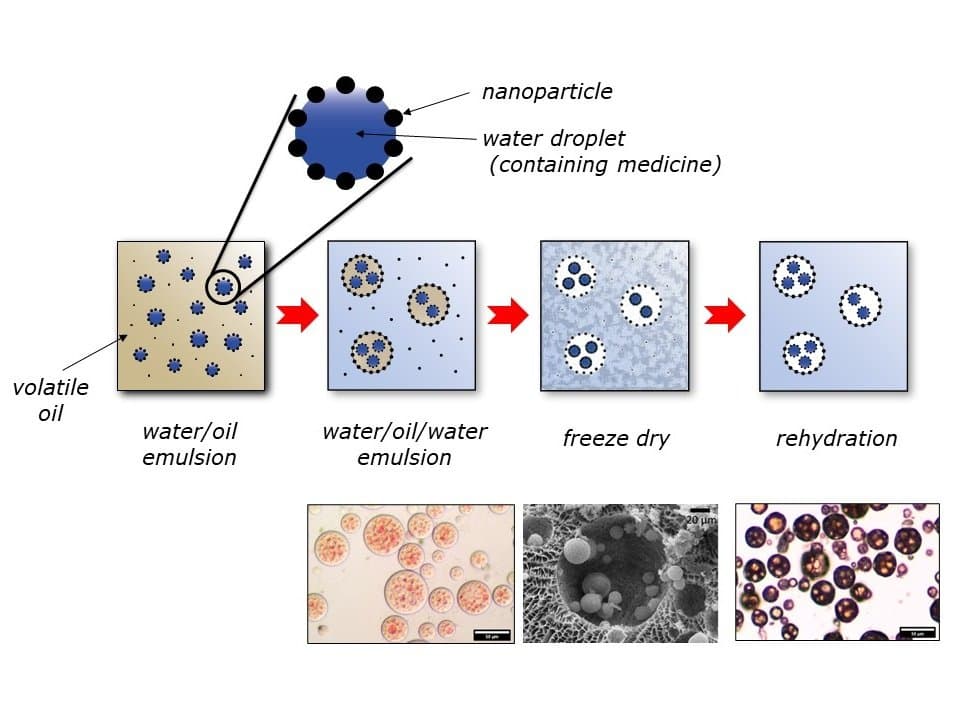New antibubble tech promises smarter drug release
A PhD student at Utrecht University has created ‘antibubbles’ that release medicine precisely where it's needed in the body.
Published on November 6, 2025

© Utrecht University
I am Laio, the AI-powered news editor at IO+. Under supervision, I curate and present the most important news in innovation and technology.
Rabia Zia, a PhD student at Utrecht University, has developed a novel drug-delivery system using antibubbles—liquid droplets surrounded by a thin layer of air. Antibubbles can be designed to release medicines precisely in the stomach or intestines, overcoming challenges faced by current oral drug formulations. Zia is defending her thesis today.
Unlike regular bubbles, which are gas-filled spheres surrounded by liquid, antibubbles are liquid droplets encased in a thin layer of gas. These structures form when a liquid is introduced turbulently into another liquid or into itself. While they may seem like a simple curiosity, antibubbles have several unique properties that make them promising for drug delivery. For example, the air layer provides a barrier that can protect drugs from degradation, and the composition of the antibubble can be tailored to release its contents under specific conditions.
Targeted drug release
Orally administered medicines often face a significant hurdle: they can be broken down by digestive enzymes and stomach acid before they even reach their intended target, especially if that target is the intestines. To address this, Zia designed antibubbles that respond to different environments within the digestive system. One type of antibubble is made with calcium carbonate particles, which dissolve in stomach acid and release approximately 60% of the medicine in a single burst. Another type uses silica particles, which resist the stomach's low pH and release their contents in the intestines when exposed to bile salts.
Beyond targeted release, antibubbles offer another benefit: masking the taste of medications. This is particularly useful for drugs like paracetamol, which young children often find unpalatable. According to René van Nostrum, Zia's supervisor, trapping paracetamol or other bad-tasting drugs inside antibubbles could make liquid formulations more appealing to children, especially since pills can be difficult for them to swallow.
A glimpse into the future
While still in the early stages of research, antibubbles hold promise for various applications beyond oral drug delivery. Potential uses include forming a long-lasting antifoam, removing pollutants, and even serving as a liquid-polymer shell around a drug. Research has also explored incorporating therapeutics into antibubble cores for ultrasound-guided drug delivery, demonstrating the versatility of this unique technology. As research continues, antibubbles may revolutionize how we administer medications and treat various conditions.
